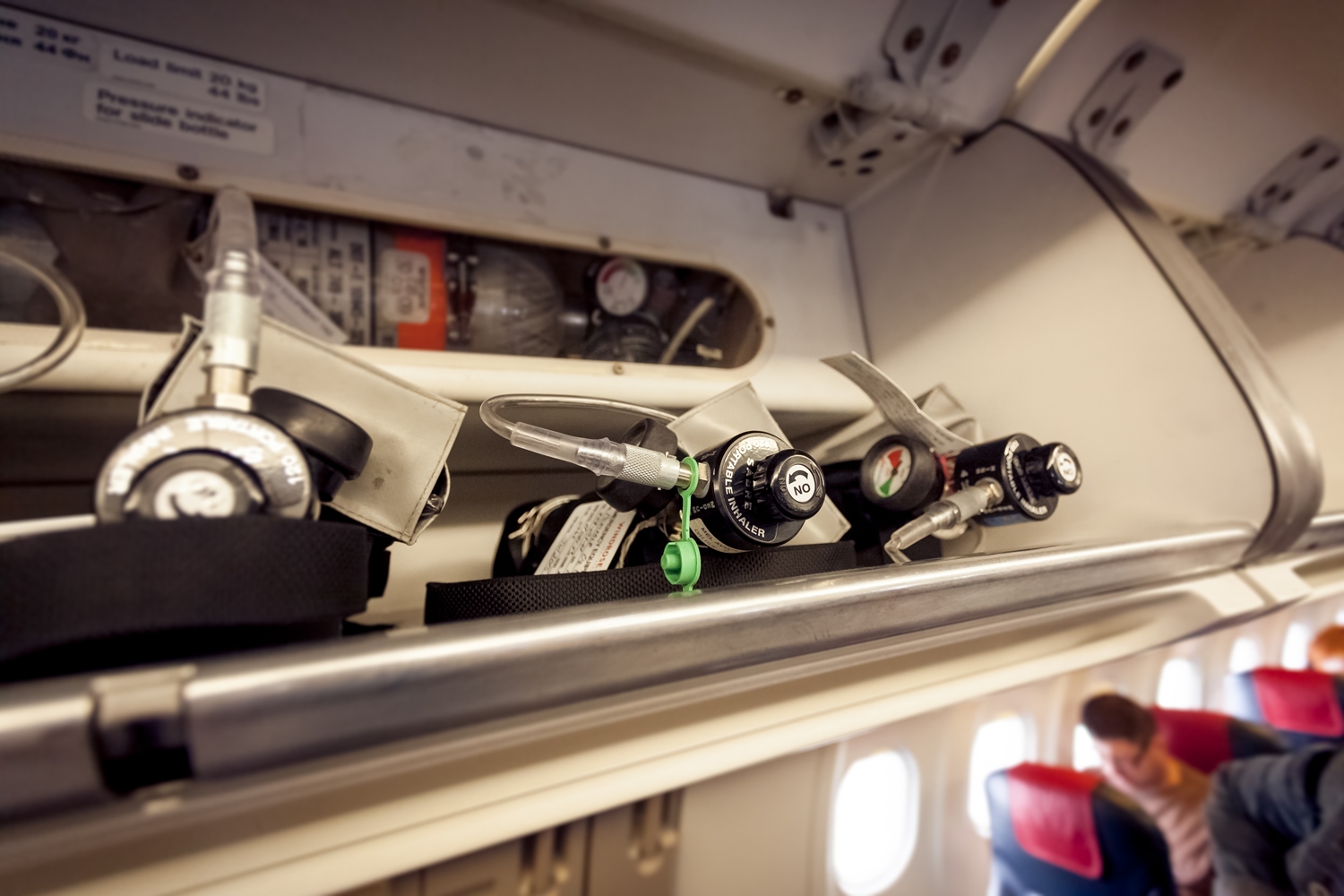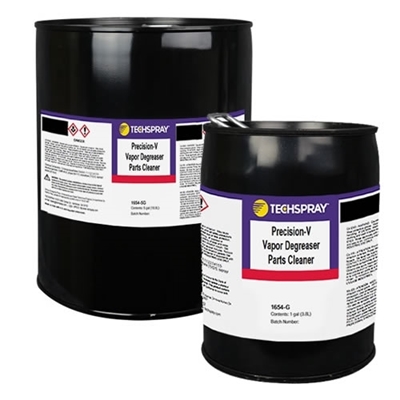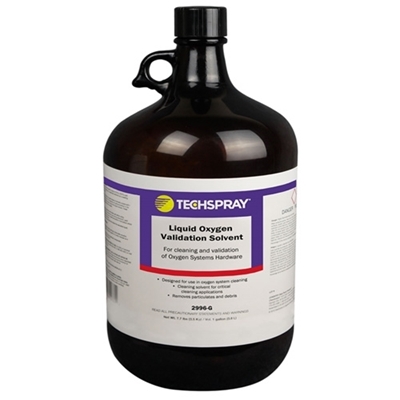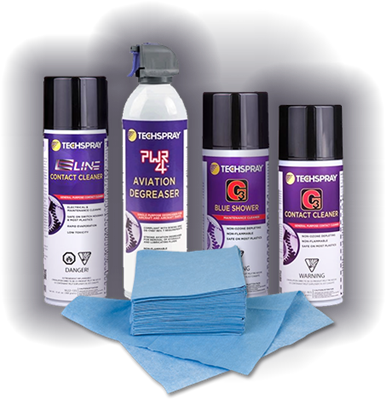Oxygen is vital to sustaining life, but the benign gas we breathe has the potential to become lethal in concentrated form. Each year, workers are harmed and killed by high-energy-yielding reactions resulting from inappropriate handling and cleaning of oxygen components.
Aviation maintenance personnel receive training in oxygen system maintenance and handling, yet it requires only one person in the component supply chain to be complacent or lose attention. The result can be lethal, not to mention the ensuing property damage, aircraft delays, and litigation.
When Oxygen System Contamination Goes Wrong
An 1986 accident report details an example of pressurized oxygen coming into contact with organic matter. Three repair shop employees died, and two employees and three members of the public were seriously hurt when an explosion and fire occurred during oxygen transfer from one cylinder to another. The transfer occurred in a room that stored oil, grease, and other oxygen and acetylene cylinders. The US Department of Labor found the company had violated 28 standards.
In a further example, a UK steel worker was left in a coma for three weeks and suffered life-changing injuries from third-degree burns when an explosion occurred while he fitted a valve to a pipe which carried pure oxygen. The subsequent investigation found a substance, possibly grease or oil, had contaminated the previously-used flanges and valve. A £1,000,000 (US$ 1,250,000) fine was levied against the company by regulators.
Why Does Oxygen React so Violently?
While oxygen is non-flammable, it's a highly reactive oxidizing element that can intensify or cause a fire. Oxygen forms 21% of the air we breathe, causing gradual oxidation in many objects, such as steel and aluminum. The phenomenon of oil-soaked rags igniting is well known and caused by the carbon and hydrogen molecules in oil separating and creating a more stable chemical compound with oxygen. This oxidation process creates heat, and when a few oil-soaked rags heat up, the oxidation accelerates, creating more heat. The process can result in spontaneous combustion.
Greater oxygen concentrations increase the oxidation rate in materials, resulting in faster heat buildup. When oxygen concentrations exceed 24%, objects such as metals or plastics that would normally not burn at atmospheric oxygen levels may ignite. Oxygen concentrations in bottles under pressure are effectively at 100% and cause such rapid oxidation and ignition when they contact contaminated material that we experience it as an explosion. Such dangers are why strict rules apply to prevent any contamination that might cause such a reaction.
Oxygen Contamination Types
The definition of oxygen contamination covers substances that may affect the oxygen's purity, cause combustion, or encourage autoignition. There are three categories of contaminants:
- Organics - hydrocarbon-based oils and greases, for example
- Inorganics - acids, solvents, water-based cutting oils, nitrates, phosphates
- Particulates - small particles like swarf, welding slag, dust, or lint
Contamination sources may include airborne contamination from dust, sand, and sprays, physical contamination from skin oils, clothing, and equipment, or using incorrect servicing procedures, lubricants, and materials.
Cleaning Methodologies
While there are many methods of cleaning oxygen equipment, each method depends on the nature of the contaminant and the cleaning standards used. Heavy-duty methods use acid, mechanical, or aqueous cleaning methods following component manufacture, or when items are heavily oxidized. However, solvent washing and vapor degreasing are the two predominant cleaning methods in an operational aviation environment.
Approved Cleaning ChemicalsHistorically, airlines used chlorinated solvents due to their low reactivity with oxygen. Yet, global treaties have banned chlorofluorocarbon (CFC) and hydrochlorofluorocarbon (HCFC) based solvents due to their environmental impact. Similarly banned were chlorinated hydrocarbons (CHCs) such as trichloroethylene and carbon tetrachloride due to carcinogenic properties.
Today's approved solvents must be exempt from regulation or have low health, safety, and environmental hazards. These include ozone-depleting potential (ODP), volatile organic compounds (VOCs), hazardous air pollutants (HAPs), and global warming potential (GWP). In addition, solvents must exhibit metal and non-metal compatibility, non-volatile residue tests, and oxygen compatibility trials. Finally, the solvents must remove all contaminants that pose a safety threat to oxygen systems.
Solvent Washing ComponentsSolvent washing is the method most used during the in-situ replacement of oxygen bottles, regulators, and lines or for inspecting oxygen components. It is a dry cleaning process ideal for difficult-to-reach or water-sensitive areas.
Solvent washing techniques may include hand-wiping small areas with a clean, lint-free cloth moistened in the solvent, immersion in the solvent followed by mechanical or ultrasonic agitation, or spray-rinsing the object. The item must be allowed to dry completely before connection or use.
Vapor Phase CleaningVapor phase cleaning, or vapor degreasing, is a cleaning method that uses the action of a solvent vapor that continuously condenses on a component's surface to remove contaminants. This method requires the component to be at a colder temperature than the solvent's boiling point.
In its simplest form, a solvent is heated to boiling point in a cabinet, causing vapors to rise upward. Suspending the component in the vapor phase of the cabinet causes the solvent to condense on its surface, dissolving oil and grease contamination and draining back to the base of the cabinet. The contamination remains in the cabinet base, and the clean solvent evaporates to condense on the part again.
The cleaning cycle ceases once the component reaches the solvent's boiling point. If cleaning is not complete, the component must be removed and cooled before recommencing the cleaning cycle. The vapor cleaning process avoids cross-contamination from multiple products and does not need drying. As a closed-loop cycle, the solvent is reused many times, making it an economical cleaning solution.
We've put together the "Quick Guide to Vapor Degreasing" for further details on vapor degreasing.
Post Cleaning Inspection
Before installation and use, a comprehensive visual inspection of the component must validate the effectiveness of the cleaning process. Inspection should occur under a bright white light greater than 500 lux, although natural light is preferred. Any visible marks, stains, or debris necessitates further cleaning.
An additional check uses ultraviolet light, as many hydrocarbons fluoresce under UV. Inspect the component in a darkened environment using the UV lamp and reject any with visible contamination and reclean.
Cleaning Standards
Oxygen system cleaning standards and recommendations have historically been diverse, with multiple governing bodies overseeing industry-specific standards with inconsistent recommendations and requirements. However, recent harmonization initiatives are creating more uniform oxygen system cleaning and maintenance standards, with four primary documents to consider.
SAE ARP1176/A - Oxygen System and Component CleaningARP1176/A is written for aerospace use and provides recommended cleaning practices to apply to liquid and gaseous oxygen systems, including tubing, valves, regulators, miscellaneous parts, cylinders, and ground service equipment. The standard details work area preparation, selecting appropriate cleaning agents, cleaning and test methods, and practices for packaging components following cleaning.
CGA G-4.1 - Cleaning of Equipment for Oxygen ServiceThe Compressed Gas Association publishes G-4.1 with claims that it's internationally harmonized following recent revisions that involved international collaboration. The standard provides protocols for each stage of the oxygen system cleaning process, including planning and scheduling, pre-cleaning, cleaning, drying, and post-inspection. The protocols provide a useful guide to procedures to follow when not specifically mandated by regulation.
ASTM G93 - Standard Guide for Cleanliness Levels and Cleaning Methods for Materials and Equipment Used in Oxygen-Enriched EnvironmentsG93 is an international standard to guide technicians in the methods, solvents, and equipment to use when cleaning oxygen equipment. It cites the two preceding standards heavily while offering non-mandatory advice on surface cleanliness measurements.
IEST-STD-CC1246D - Product Cleanliness Levels and Contamination Control ProgramCC1246D was first published as MIL-STD-1246 until the military asked the Institute of Environmental Sciences and Technology to expand its use to non-military applications. It defines quantitative cleanliness levels for products that include components and fluids, with levels defined for particulate and non-volatile residue molecular contaminants.
Azeotropic Fluids
An azeotrope comprises two or more liquids combined to form a mixture with a constant boiling point, with all constituents vaporizing at the same temperature and the vapor retaining the proportion of constituents in the liquid. This characteristic means distillation will not separate the mixture.
The increased use of azeotropic liquids for oxygen cleaning stems from regulators banning the chlorinated and brominated solvents historically used due to their effects on health and the environment. While there are cheap replacements such as IPA or cyclohexane, these are flammable.
Azeotropic blends of chemicals allow the production of designer cleaning products that are effective, non-flammable and, due to their azeotropic characteristics, can be used repeatedly in a vapor phase cleaner. While the cleaner may be more costly to produce due to its constituent parts, the ability to reuse the cleaner many times amortizes the initial purchase cost over many cleaning cycles, making them cost competitive with the banned cheaper products.
Techspray Products for Oxygen Systems Cleaning
Techspray has developed several proprietary products with azeotropic properties suitable to safely and effectively clean oxygen system components. We designed our Liquid Oxygen Validation Solvent for evaluation and testing under NASA/TP-2015-218207 for cleaning and validating the hardware of NASA propulsion oxygen systems. The blend also meets SAE ARP1176 as a cleaner for use in critical cleaning applications. A highly effective cleaner, this non-combustible compound removes particulates and grease with a very low non-volatile residue.
Our Precision-V Vapor Degreaser Parts Cleaner has a low boiling point to reduce energy use by the vapor degreaser's boil elements and chiller coils. Non-reactive or corrosive to most metals, Precision-V competently and efficiently removes organic contaminants from oxygen and gas components with low volatile organic compounds and no residue.
If you have concerns regarding the safe and effective cleaning of oxygen components, we maintain a team of chemists and application specialists who can assist. We'll work with you to review your requirements and recommend the most suitable aviation cleaning solution for your purpose. Should you require cleaning product compliance to a specific standard, we'd welcome your call to discuss how we can assist in developing a product that meets your compliance and operational needs.









